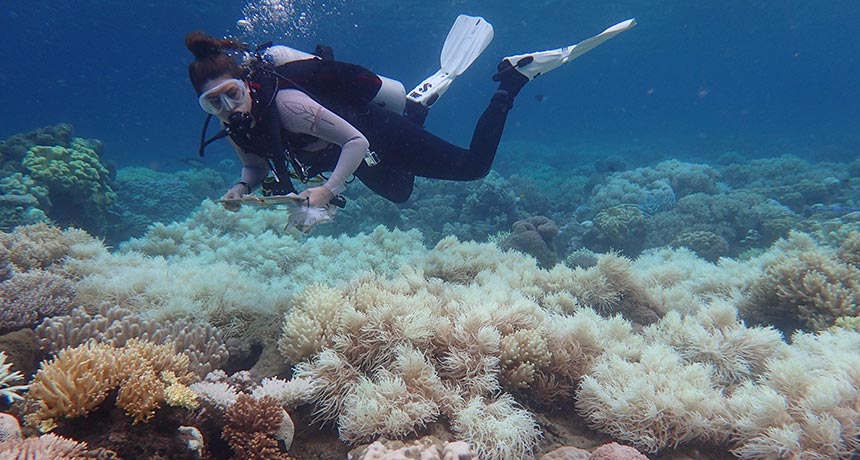The Great Barrier Reef is experiencing a major coral bleaching event right now

A severe coral bleaching event spurred by high ocean temperatures has struck the Great Barrier Reef for an unprecedented second time in 12 months, reveal aerial surveys released April 10 by scientists at James Cook University in Townsville, Australia. While last year the northern third of the reef was hardest hit, this time around the reef’s midsection experienced the worst bleaching. The two bleaching events together span around 1,500 kilometers of the 2,300-kilometer-long reef.
“It takes at least a decade for a full recovery of even the fastest growing corals, so mass bleaching events 12 months apart offers zero prospect of recovery for reefs that were damaged in 2016,” James Kerry, one of the researchers behind the finding, said in a statement.
Bleached corals aren’t dead. Trauma, disease or warm water can cause an exodus of the symbiotic algae that provide corals with food and vibrant color schemes. If better conditions, such as cooler waters, return, the algae may return to their homes. If they don’t come back, though, the corals starve.
Warming caused by El Niño exacerbated last year’s bleaching event. With El Niño now long gone, the researchers blame this year’s bleaching largely on global warming. If humans don’t curb emissions of planet-warming greenhouse gases, scientists warn that the entire reef could be in jeopardy.